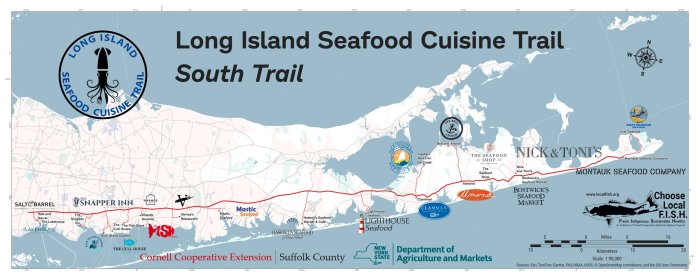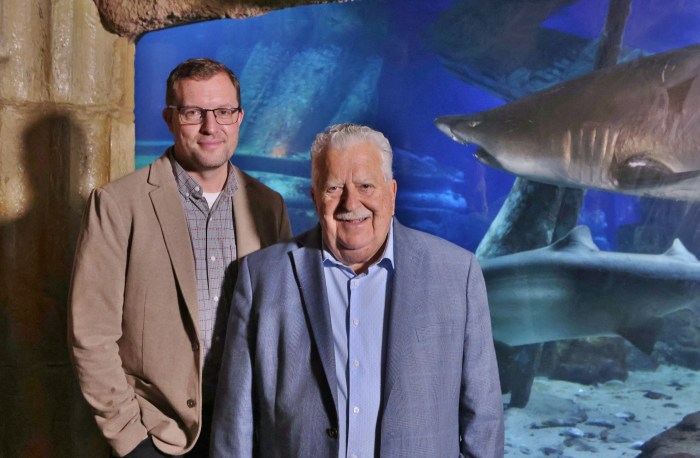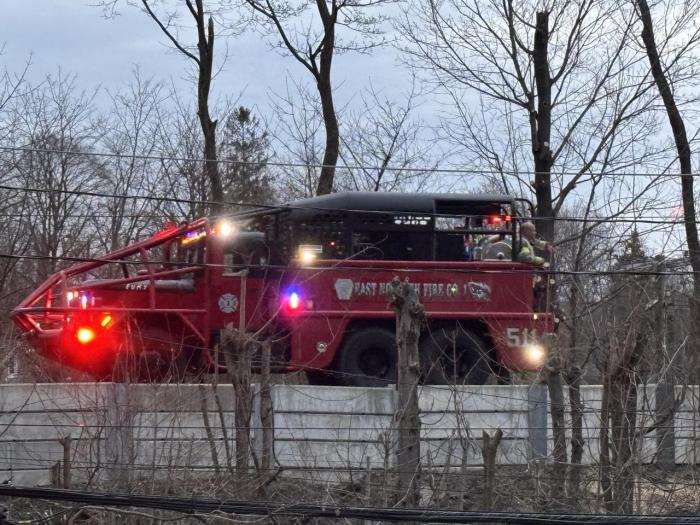What’s the local rap on Raptors?
On a crisp, bright October morning years ago, I helped lead a group of families on a nature walk at Robert Moses State Park. As we moved through the dunes on the boardwalk, some participants noticed a few deer browsing on the brush. They jostled for position along the railing and tried whatever they could to draw the animals closer. It was the kind of interest that naturalists love to see from program attendees.
Unfortunately, the group wasn’t there for a deer program; they were there to see birds! And as it turned out, those distracted by the deer missed a spectacular show in the blue skies above. The clear weather and good winds made it a perfect day to witness one of Long Island’s great wildlife spectacles: the fall raptor migration.
Each year, starting in mid-September, hawks, falcons, osprey, and other diurnal raptors (or “daytime carnivores”) begin their migrations from the northern U.S. and Canada to southern wintering grounds. They don’t migrate to warmer weather but rather to find reliable food. Birds that feed on rodents must move on when their food sources burrow underground for the winter. Similarly, birds that rely on fish have to fly south when fish move to deeper water. Species that feed primarily on insects or smaller birds have to move south when their prey disappears.
While raptors don’t migrate in distinct groups like songbirds or waterfowl, they tend to concentrate along natural topographic features. Ridgelines, for example, are attractive to migrating raptors because they provide constant updrafts on which the birds can soar and glide. For this reason, many of the large raptors, such as Red-tailed Hawks and Bald Eagles, tend to migrate above the long north/south mountain ridges of the Appalachian Range.
But many raptors, such as falcons, also migrate along coastlines. Because they have an aversion to flying over large bodies of water, they hug the coast and take advantage of the reliable updrafts the ocean provides. This explains why Long Island is a great place to see migrating raptors, especially on the South Shore’s barrier islands.
Birds moving out of New England hit the Atlantic Ocean as they fly south over Massachusetts and Rhode Island. Instead of continuing over open water, they make a right turn and follow the coast, which brings them to the eastern tip of Long Island. They then follow our southern coast before skipping across the apex of the New York Bight to continue their journey along New Jersey’s coastline. This migratory pattern explains why there’s an east-facing observation platform at the end of Robert Moses State Park. And why it’s generally unoccupied in the winter, spring, and summer.
This time of year, you’re almost sure to see a few people sitting on the platform with their binoculars and scopes fixed on the eastern sky. They’re likely members of FIRE – the Fire Island Raptor Enumerators – an organization dedicated to monitoring and conserving raptor species.
Each fall since 1982 (43 years!), the FIRE volunteers have watched the birds at the barrier beach daily. They skillfully identify all passing raptors and keep careful records of their observations. When compiled and combined with information from other monitoring locations, FIRE’s records help scientists monitor the overall health of raptor populations.
Their data, available on their website (battaly.com/fire), also provides a compelling window into the spectacular show on the barrier islands each fall. For example, last year, on October 13, FIRE’s volunteers recorded 140 Merlin and 148 American Kestrels in a single morning! And these are not birds that are easily attracted to backyard birdfeeders – they’re falcons, fast, agile hunters that can be difficult to find most times of year! And unlike larger raptors, these smaller species fly relatively low, sometimes just above the brush. They can pass at practically eye level when you’re on the tower or the boardwalk!
The fall raptor migration can be a dramatic and exciting event, with hundreds and sometimes thousands of these spectacular birds moving across our region in waves. And they’re usually not alone; the barrier islands host a “river of migration” this time of year, with shorebirds, songbirds, waterfowl, dragonflies, and Monarch butterflies also making their way south.
If you head out to catch the wonder of the fall migration, try not to be too distracted by the deer – you might miss the real show.
Nature Matters is a regular column of the Seatuck Environmental Association, a nonprofit dedicated to conserving Long Island wildlife and the environment. Visit seatuk.org for more information about the organization’s conservation initiatives and educational programming.




























